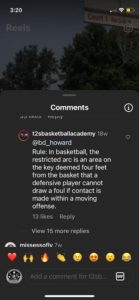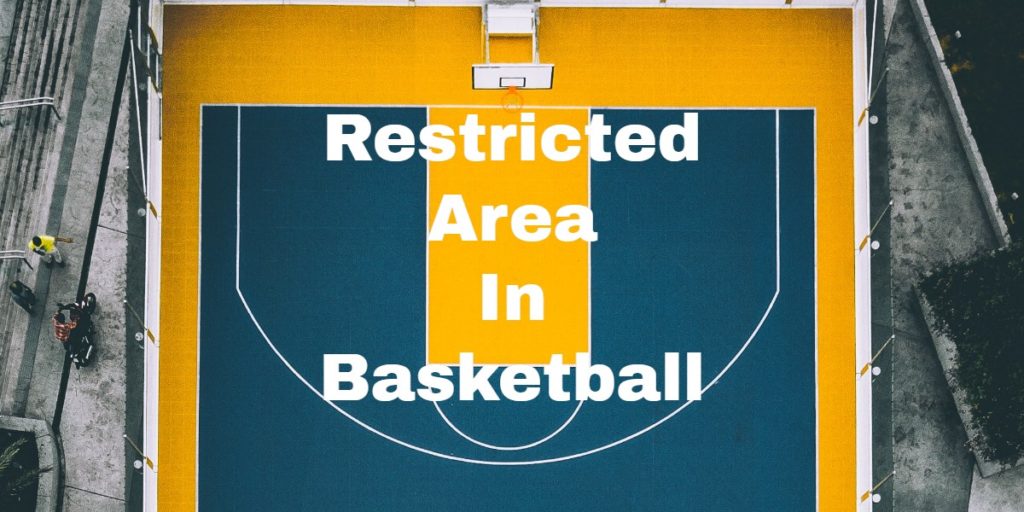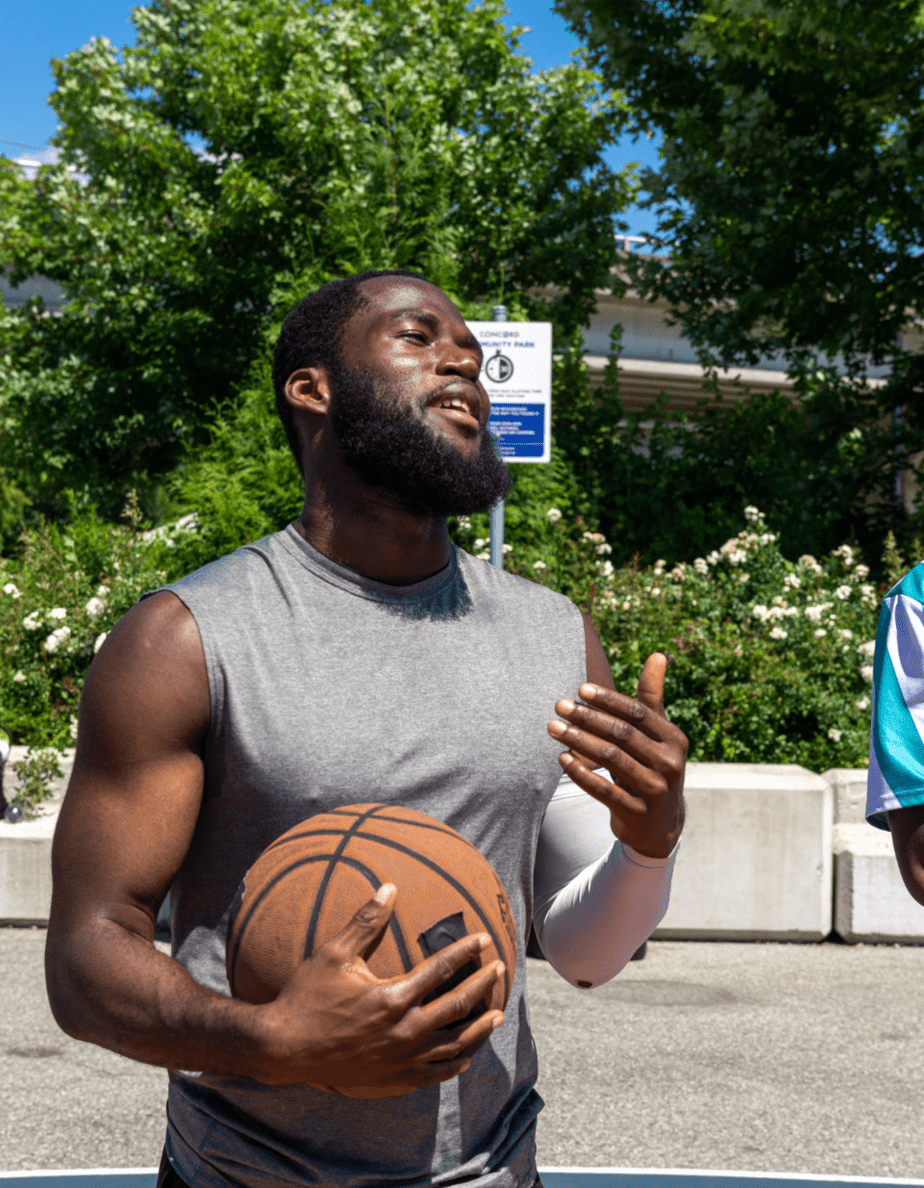Navigating the Restricted Area in Basketball: Rules, Strategies, and Significance
Understanding the Basics of Basketball
I have been coaching under-10 youth basketball for the last 2 years and the restricted zone doesn’t come into play too often. But I have fielded 10s of 10s of questions from my 10-year-old about why the restricted area in basketball even exists. Or my like “Why is that circle under the hoop?”. I will start with answering the basic question if you are just here for that. Then I will get into some details about the rules associated with the restricted area, why it was created in the first place, and some strategies you can build around it.
What Is The Restricted Area in Basketball?
The restricted area, also known as the “no-charge semi-circle”, is a semi-circular zone underneath the basketball hoop. Its purpose is to limit collisions and injuries near the basket, affecting offensive and defensive fouls.
To put it more lightly, the restricted area is a semi-circular zone under the basket. It’s the no-charge zone, the “please don’t bump into me while I’m trying to score” region. It’s like a VIP lounge, but the bouncer is a referee, and instead of a velvet rope, we have a painted arc.
Rules Associated with the Restricted Area
Now, here’s where things get interesting. The restricted area has some significant implications for the game on the offensive and defensive sides. Here’s what I mean:
- Offensive: If a defensive player is standing in the restricted area, the offensive player can knock them over like a bowling pin without being called for a charging foul. It’s like having an ‘Excuse me, coming through!’ pass.
- Defensive: On the other side of the coin, if a defensive player isn’t set in position outside the restricted area when the offensive player starts their upward shooting motion, it’s a blocking foul. If he is set, then it may be called an offensive foul.
In the video below produced by the Minnesota State High School League, they discuss their implementation of the restricted area rule. In it, they discuss how the rules of verticality and legal guarding position impact play.
Legal Guarding Position In Basketball
Legal guarding position in basketball defense is a critical concept that significantly influences how the game is played, especially within the restricted area.
In basketball, a player is said to have established a legal guarding position when they are facing their opponent and have both feet firmly planted on the floor. Once a player has established this position, they’re allowed to move laterally or backward to maintain their position relative to their opponent.
In the context of charges and blocking fouls, the concept of a legal guarding position is critical. For a charge to be called against an offensive player, the defender must have established their legal guarding position before the offensive player starts their upward shooting motion. In other words, the defender must be set, not moving forward or sideways.
This creates a little caveat or loophole for the defense around the restricted area. If a player has established a legal guarding position outside the restricted area and then moves laterally or backward into the restricted area, they can legally draw a charging foul on an opponent.
However, if the defender was initially inside the restricted area and didn’t establish a legal guarding position outside it, then they cannot draw a charge, and any contact is likely to be called a blocking foul.
Verticality In Basketball
Verticality in basketball is a defensive principle that is often applied in and around the restricted area. It refers to the concept that each player is entitled to the space within their vertical plane, which essentially extends from their feet upwards to the ceiling. This principle is particularly relevant in the context of shot blocking and defense in the restricted area.
Here’s how it works: If a defender maintains their vertical plane — meaning they jump straight up, hands raised, without leaning into the attacker — they have a right to that space. Even if contact occurs with an offensive player during a shot, a foul won’t be called against the defender as long as they’ve maintained a legal guarding position and their verticality.
The Evolution of the Restricted Area Rule
The concept of the restricted area was introduced in 1997 in the NBA to protect players (primarily discouraging defensive players from stepping in and under an offensive player too close to the hoop) from injuries. It has seen some changes over the years but eventually, a version of the rule was also adopted by NCAA and high school basketball. NBA referee Bharat Ramnanan explains restricted area block charges in the video below.
Strategies Involving the Restricted Area
Now, here’s the part you’ve been waiting for – the secret sauce, the insider tips, the ninja tactics involving the restricted area.
Offensively, driving into the restricted area can result in easy points or drawn fouls. But as Uncle Ben told Spiderman, “With great power comes great responsibility.”
Defensively, establishing a position outside the restricted area can lead to offensive charging fouls, turning the tide of the game. It’s like laying a trap for an overzealous attacker.
My wife sent me this Instagram post while I was coaching this last season. Take a look at the move. Do you think it is legal or not?
As I read down in the comments (it was quite a healthy debate) the account owner at t2sbasketballacademy defended the move saying the restricted zone rule gave the offensive player license to get physical since this happened within the zone. The rule he quotes is definitely in regard to the restricted area.

Many comments refute this by saying it is a displacement foul. Speaking of controversies and debates let’s move onto that subject.
Controversies and Debates Around the Restricted Area Rule
Of course, as with any rule in sports, the restricted area has had its fair share of controversies and debates. There’s nothing like a controversial call to spark a debate that could rival the intensity of a presidential election.
This is from Houston vs. Temple basketball game on a last-second shot.
There have been countless instances where crucial calls involving the restricted area have led to dramatic turnarounds in games. The debates around such incidents not only fuel sports radio shows for weeks but also lead to discussions about possible rule modifications.
Conclusion
So there you have it – a comprehensive breakdown of the restricted area in basketball. Who knew that a semi-circular patch on the court could have so much importance? If you found this article useful, enlightening, or even mildly entertaining, feel free to share it with your basketball-loving friends.
Frequently Asked Questions
How does the restricted area affect fouls in basketball?
If a defensive player is standing in the restricted area, the offensive player won’t be called for a charging foul, even if contact is made. Conversely, a defensive player not set outside the restricted area when the offensive player starts their upward shooting motion results in a blocking foul.
Why was the restricted area rule introduced in basketball?
The restricted area rule was introduced to protect players, particularly those who often position near the basket, from injuries. It encourages safer gameplay and adds a strategic element to the game.
How has the restricted area rule evolved over time?
Since its introduction in 1997, the restricted area rule has undergone several changes to enhance player safety and game strategy. The modifications reflect evolving gameplay styles and aim to reduce collision-related injuries.
What strategies involve the restricted area in basketball?
Offensively, players can drive to the basket or draw fouls by exploiting the restricted area. Defensively, establishing a position outside the restricted area can lead to offensive charging fouls, providing opportunities for possession changes.

Troy Wallace
Troy Wallace is Certified Basketball Speed Specialist and shares his experiences in trying to stay as healthy as possible to stay on the court. He is active in coaching youth basketball in YMCA, Team Work Sports Nebraska, and, currently, in the Jr. Warriors program in Omaha, NE. Visit Troy's Full Author Bio Page or email him directly.
Meaningful conversations happening daily about training, recovery, and injury-specific rehabilitation as well as sport-specific discussions on playing, coaching and refereeing your favorite sport. We welcome experts and those with curious minds seeking answers.
Join The Stay On The Court Community!